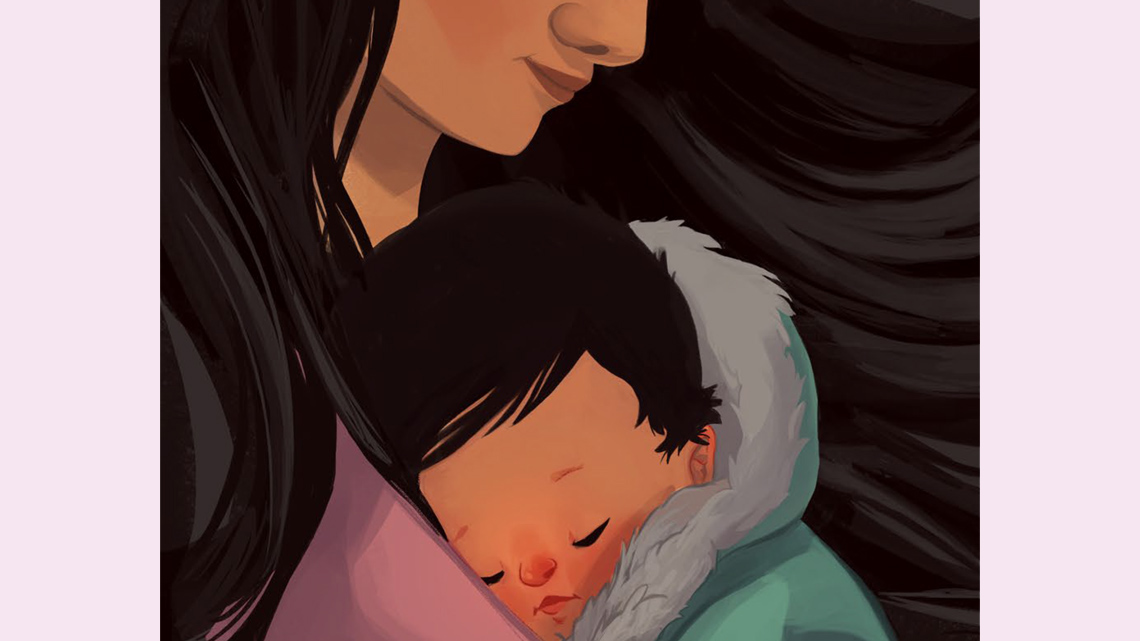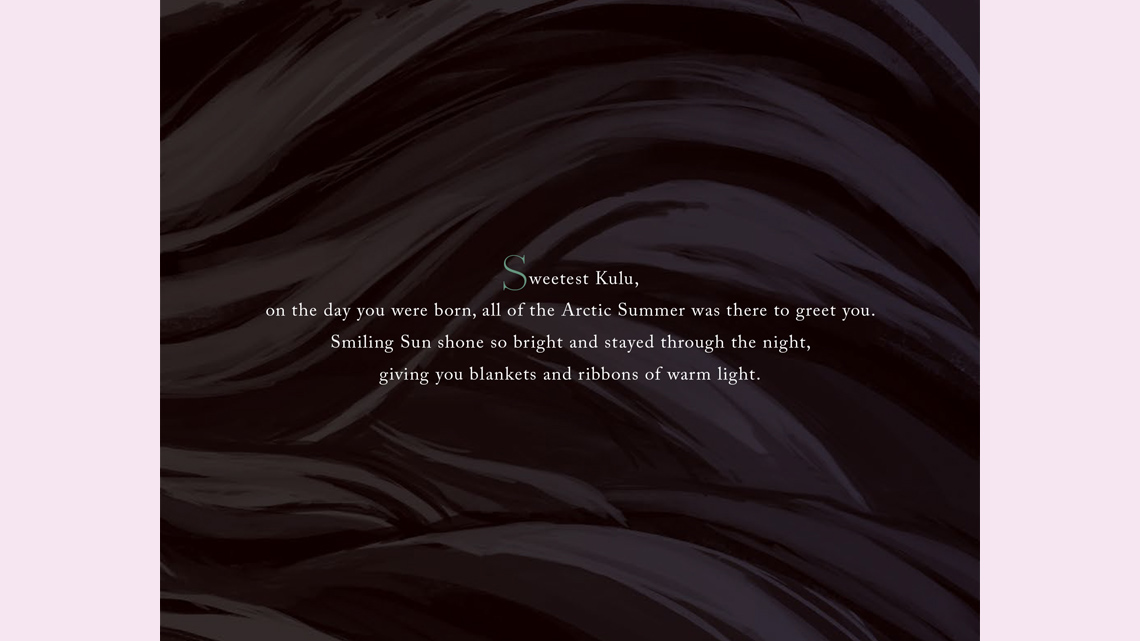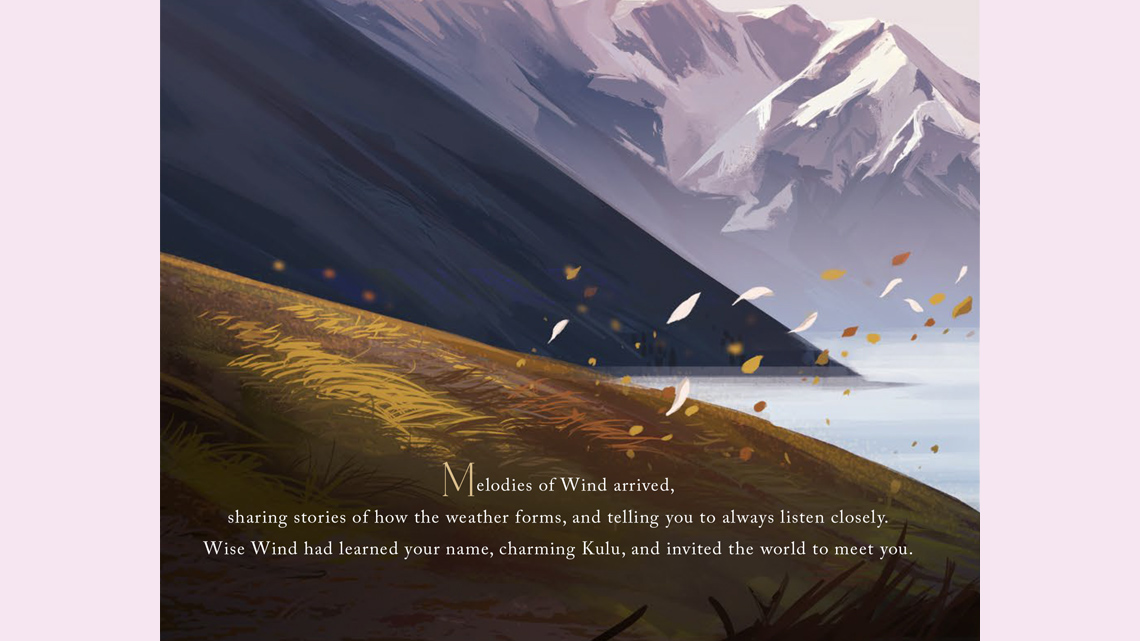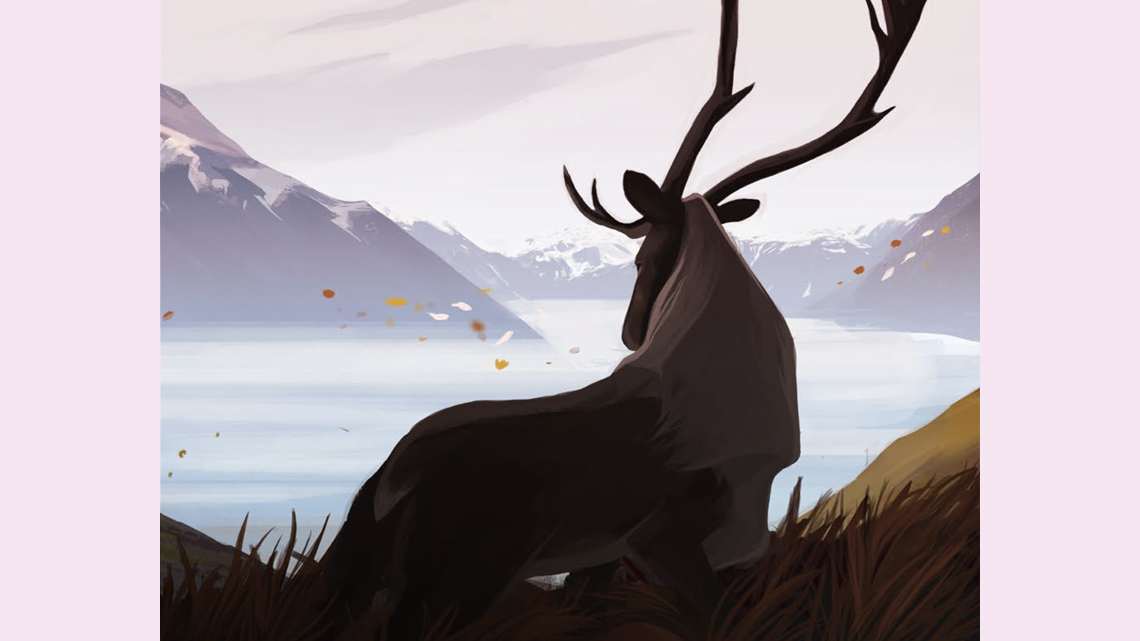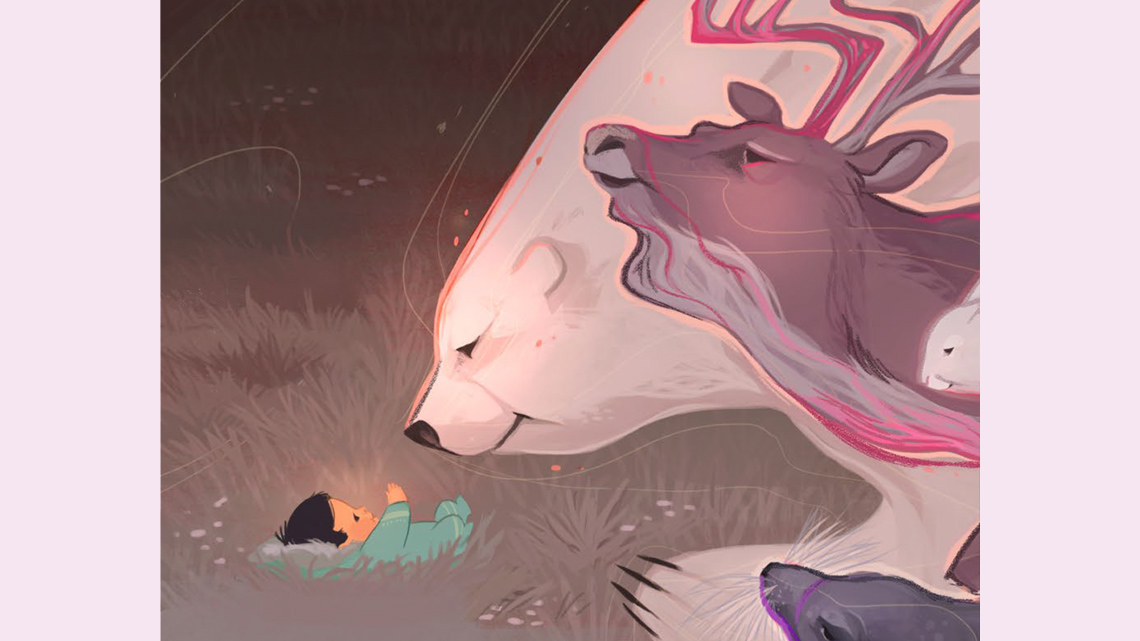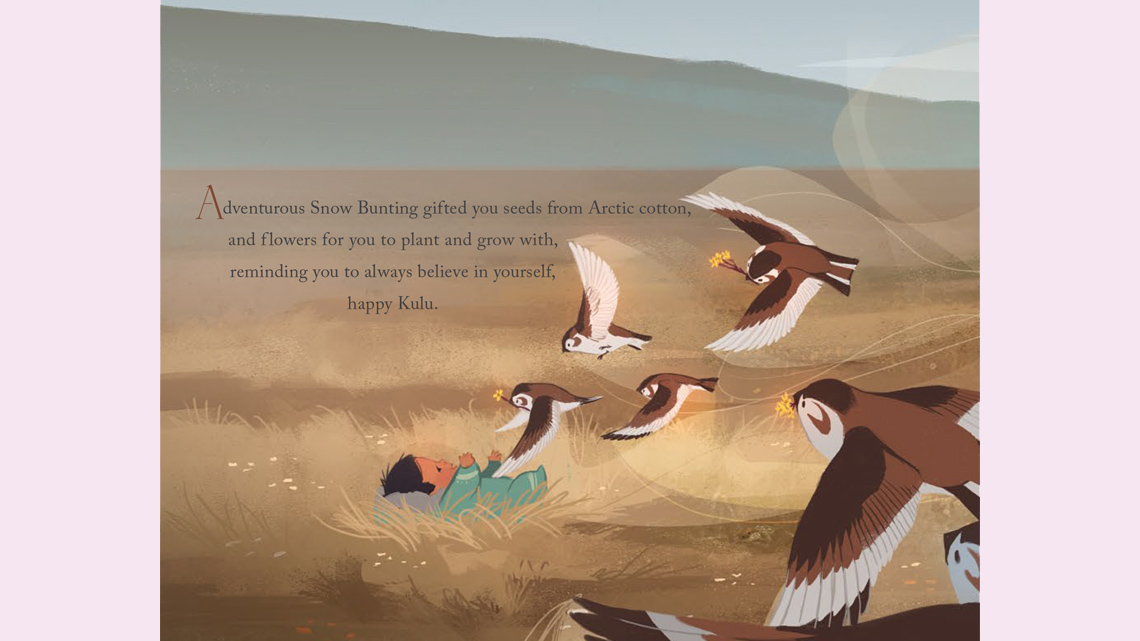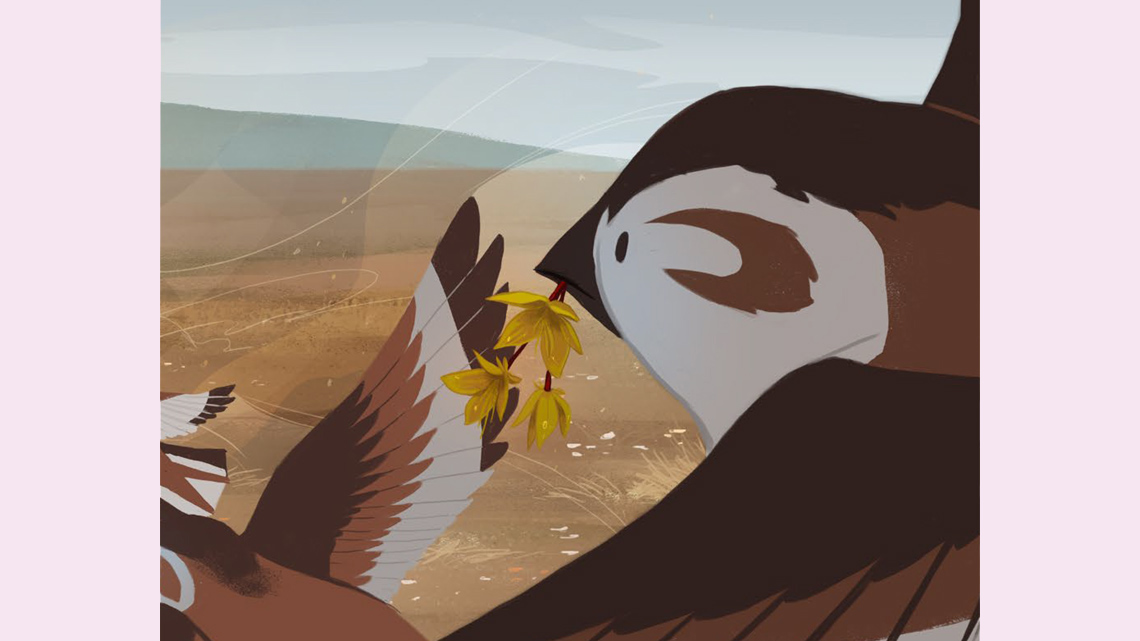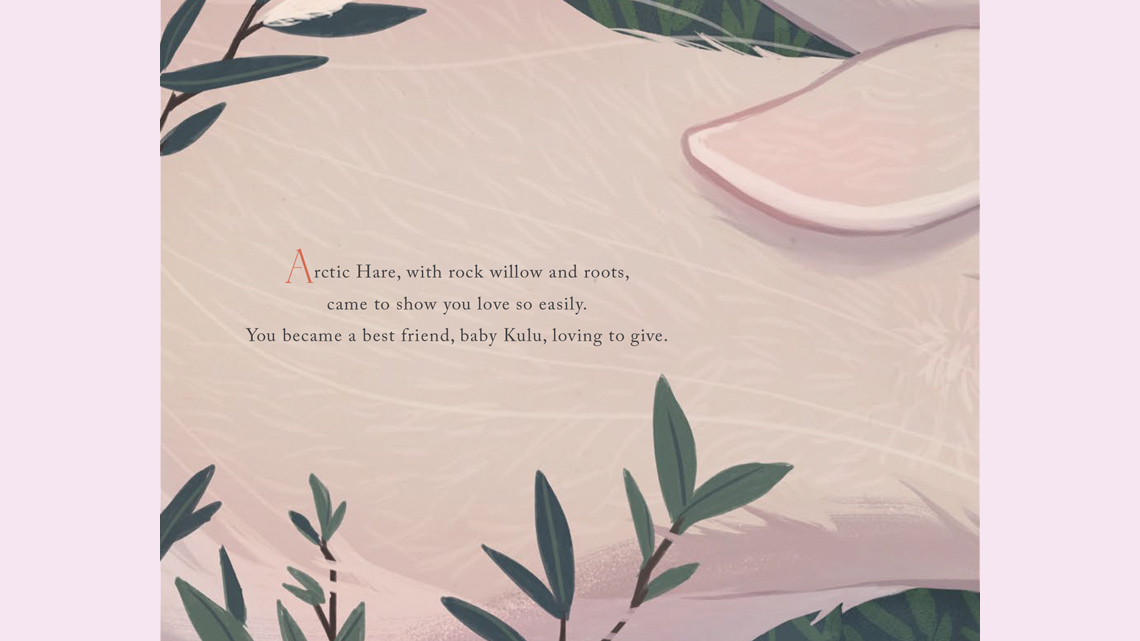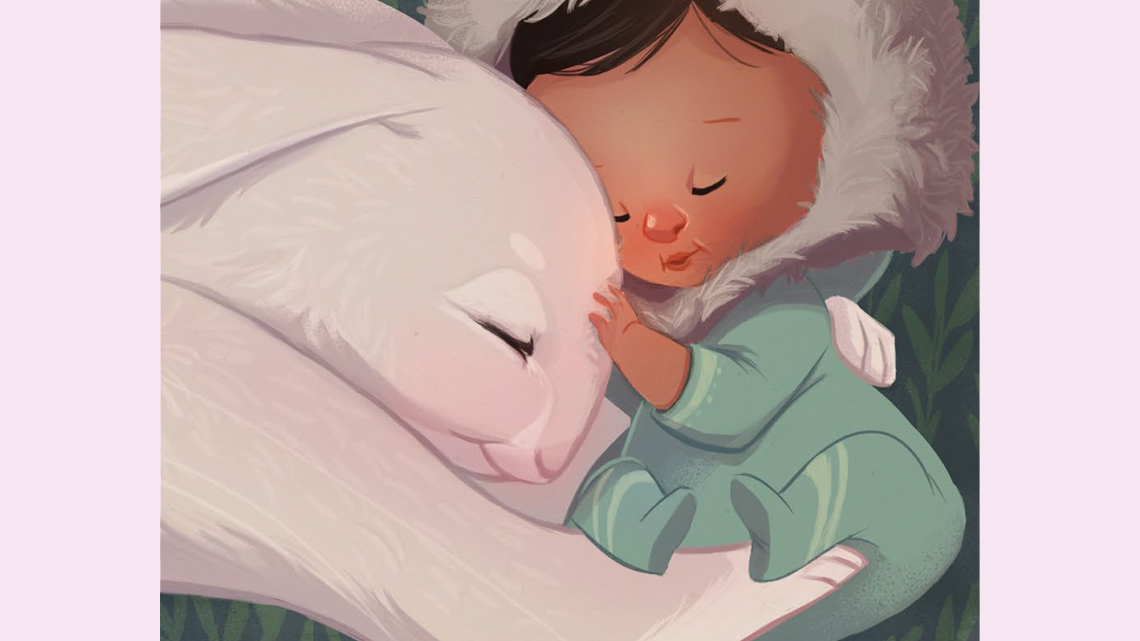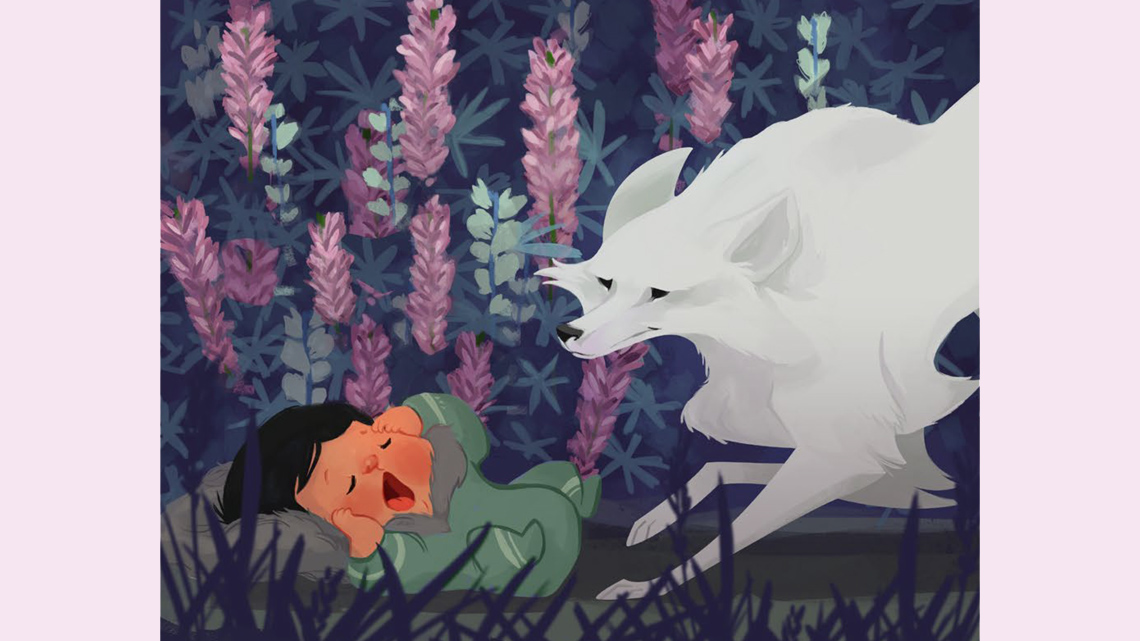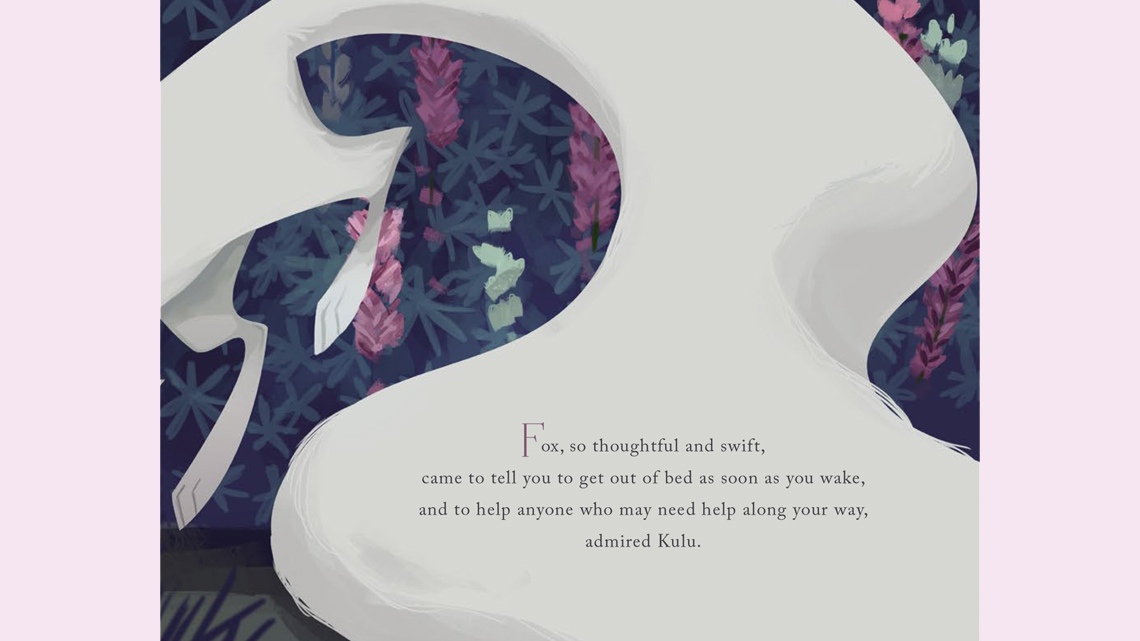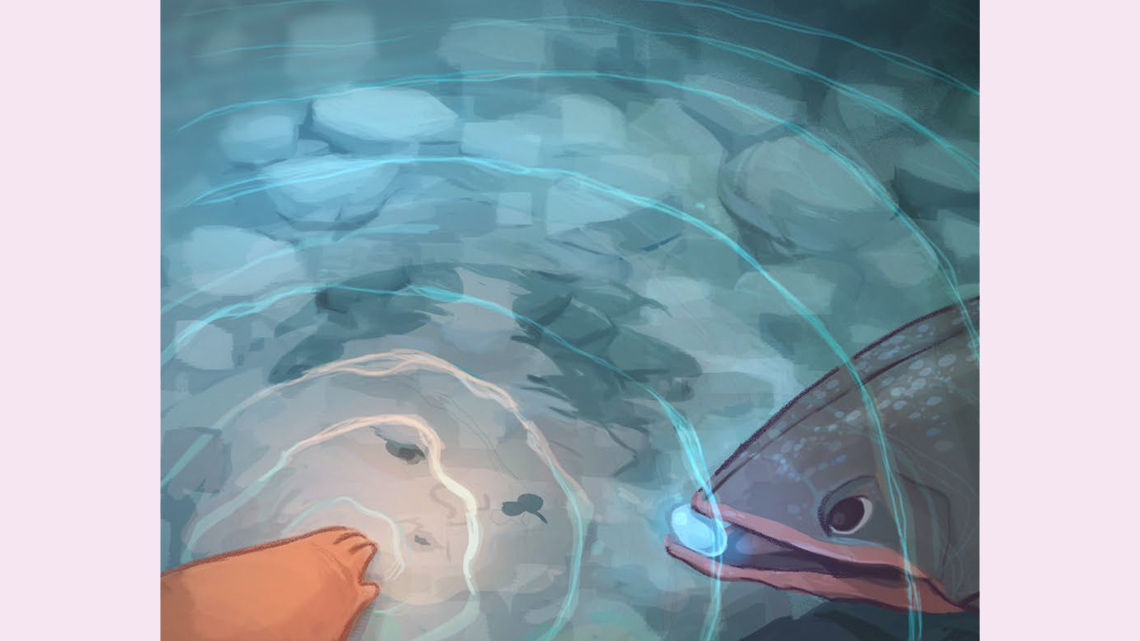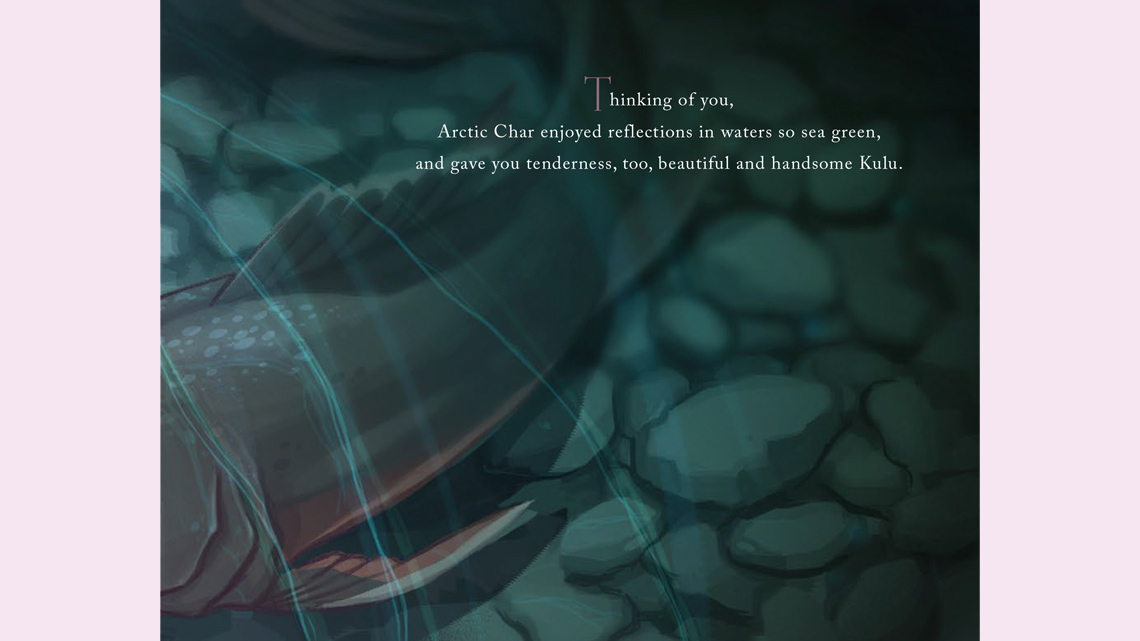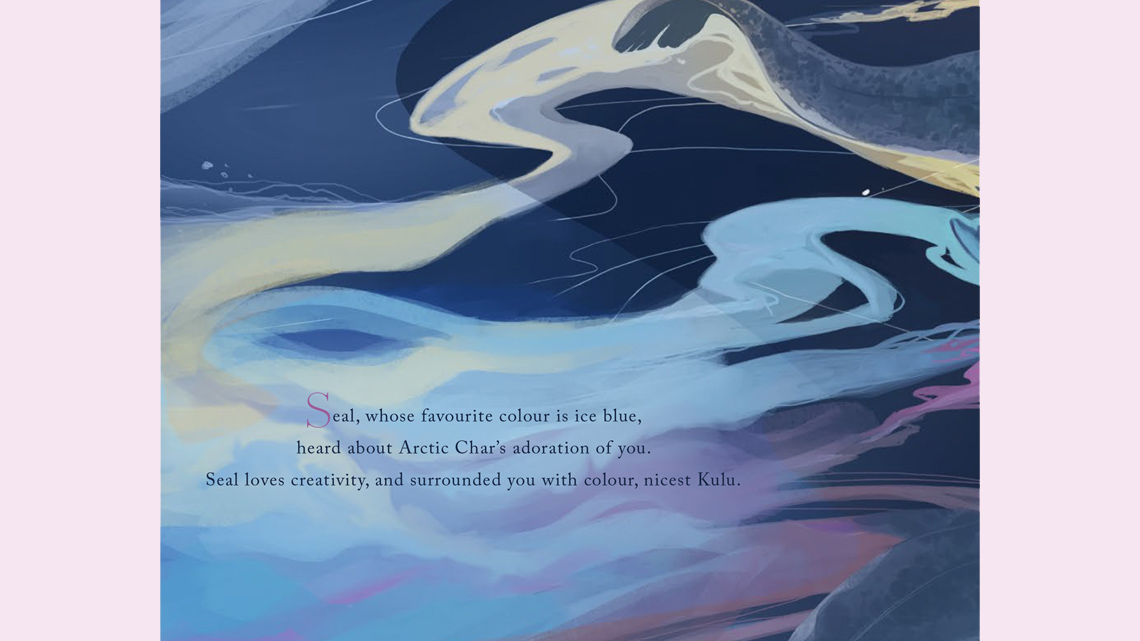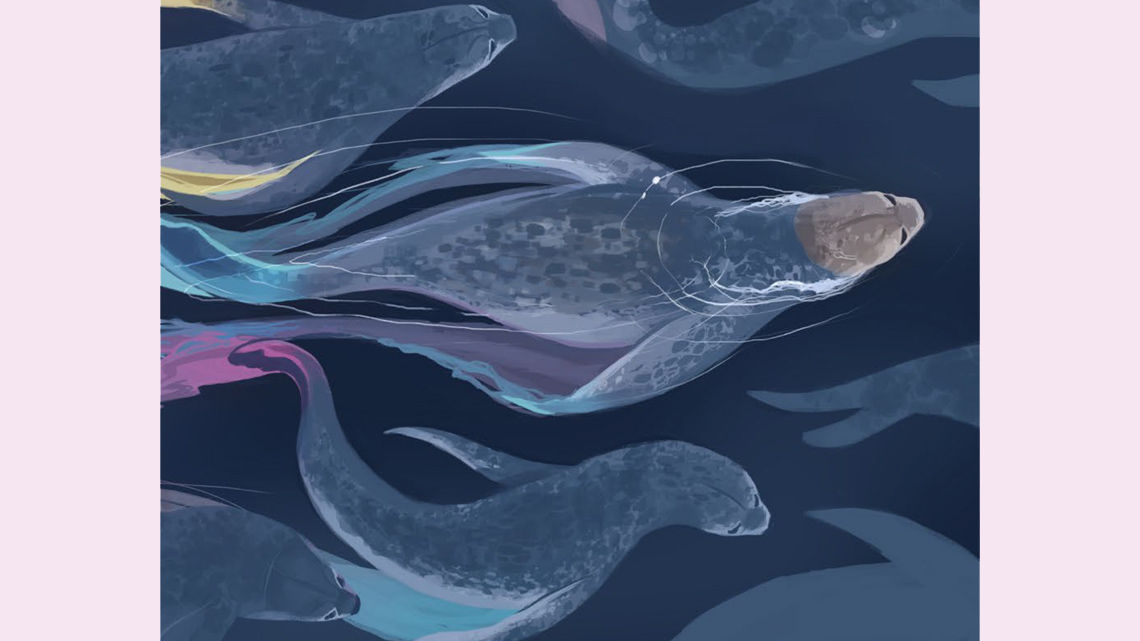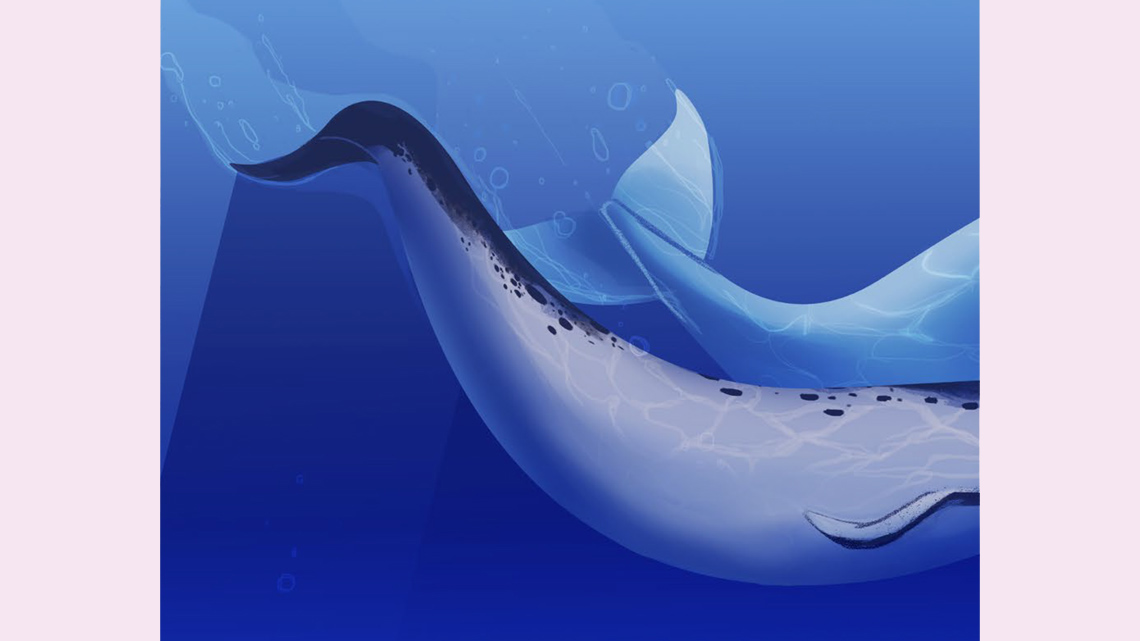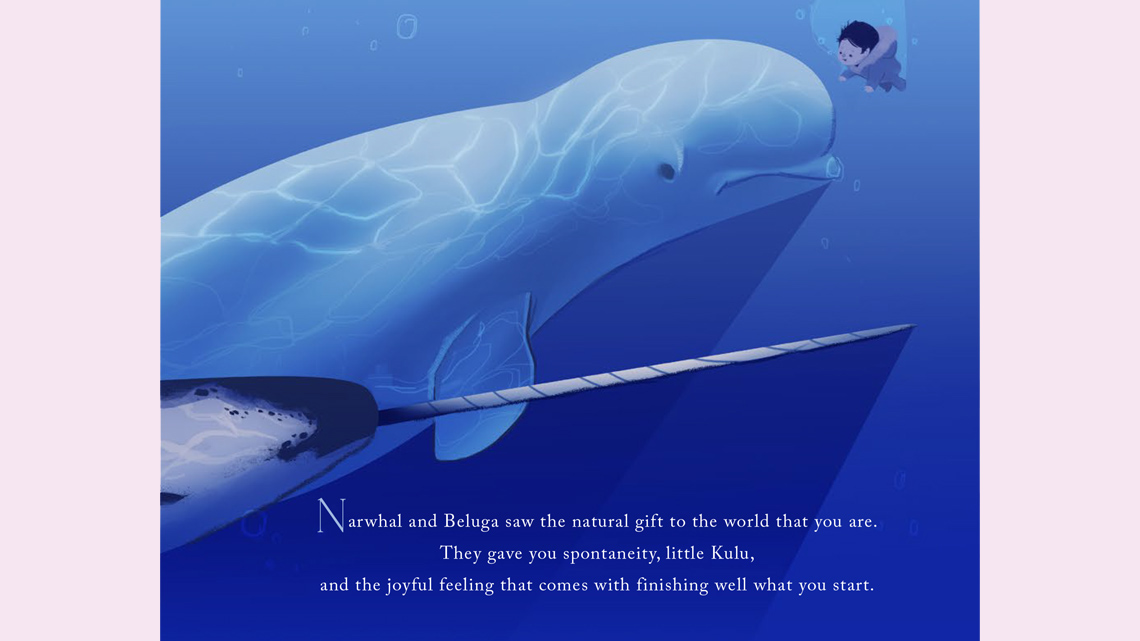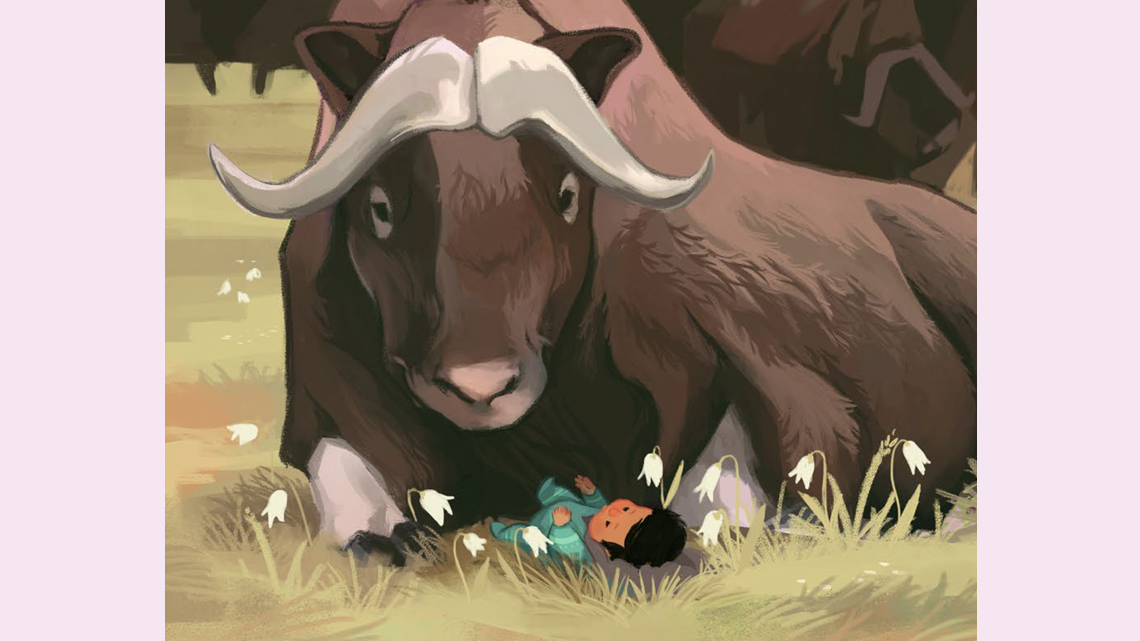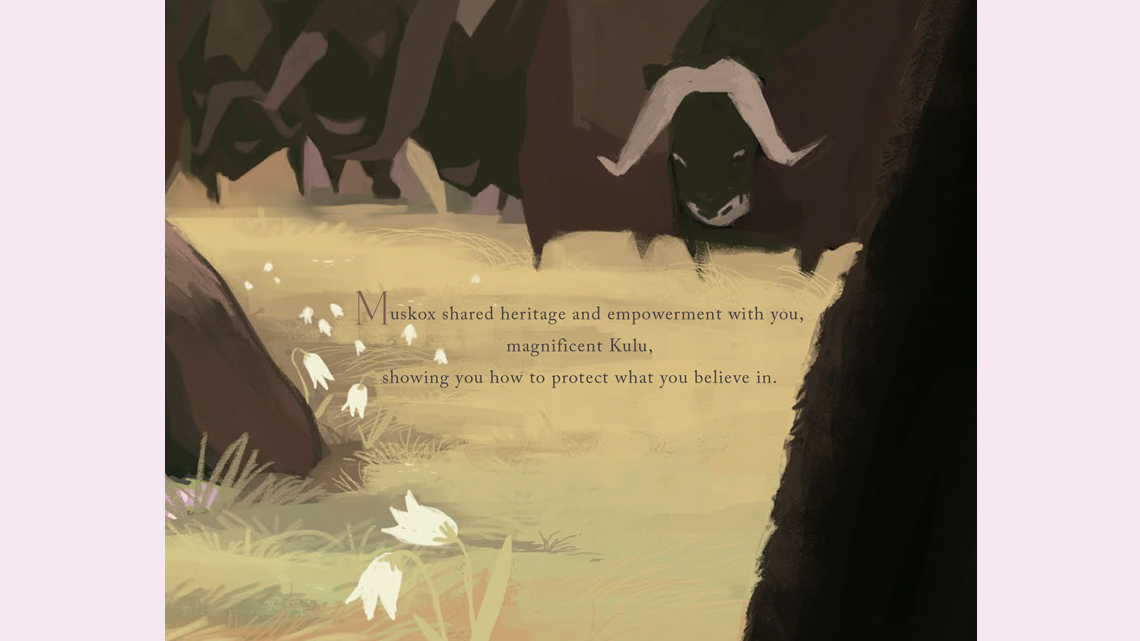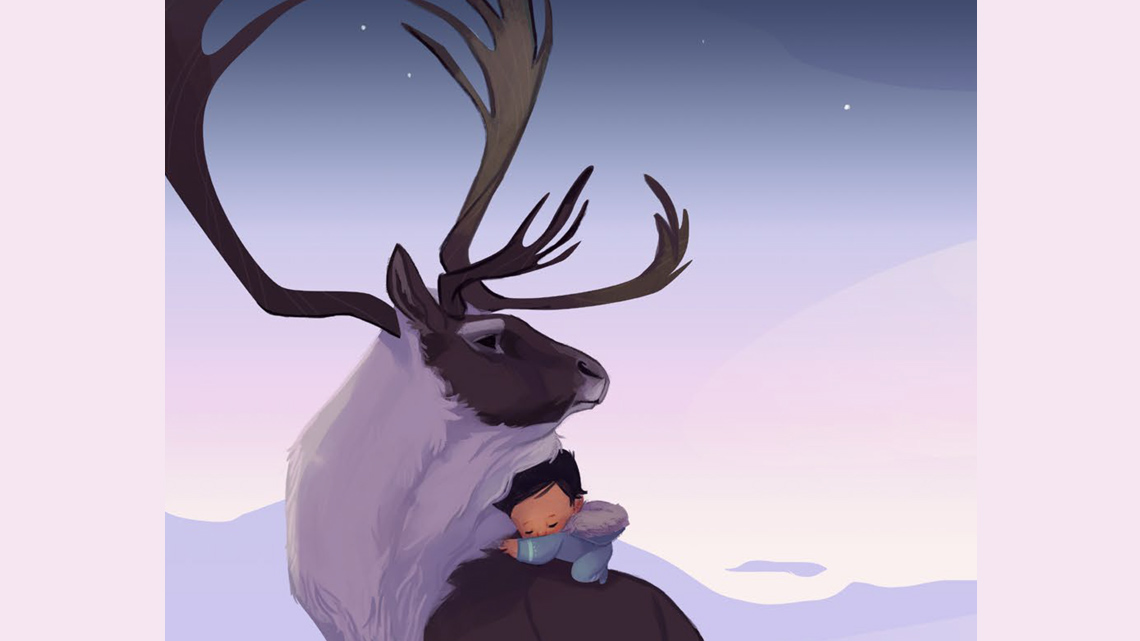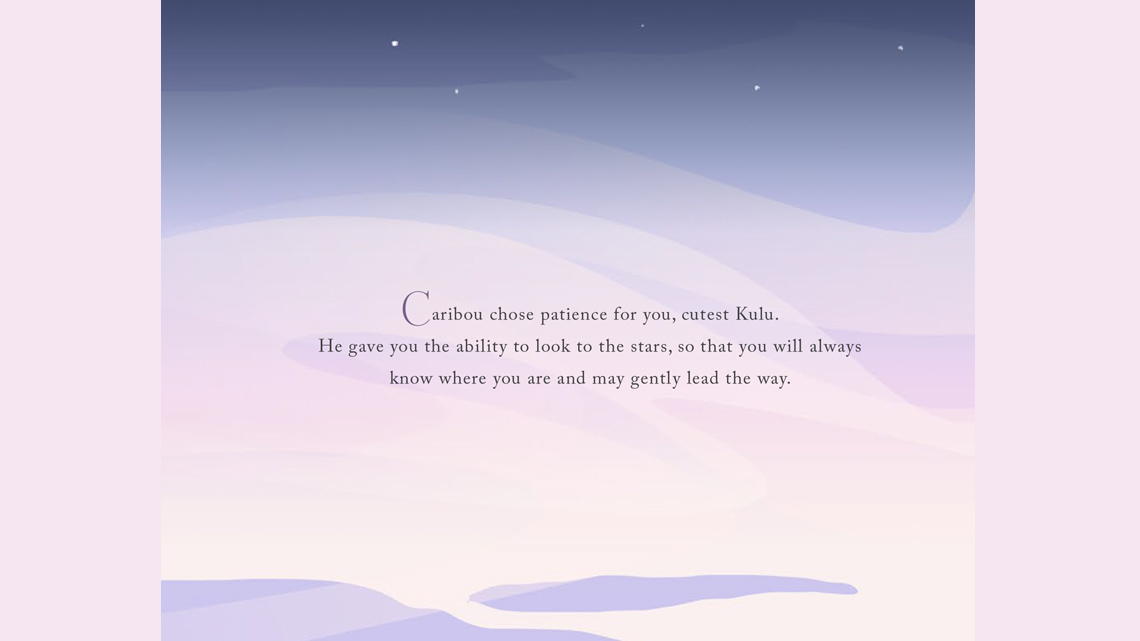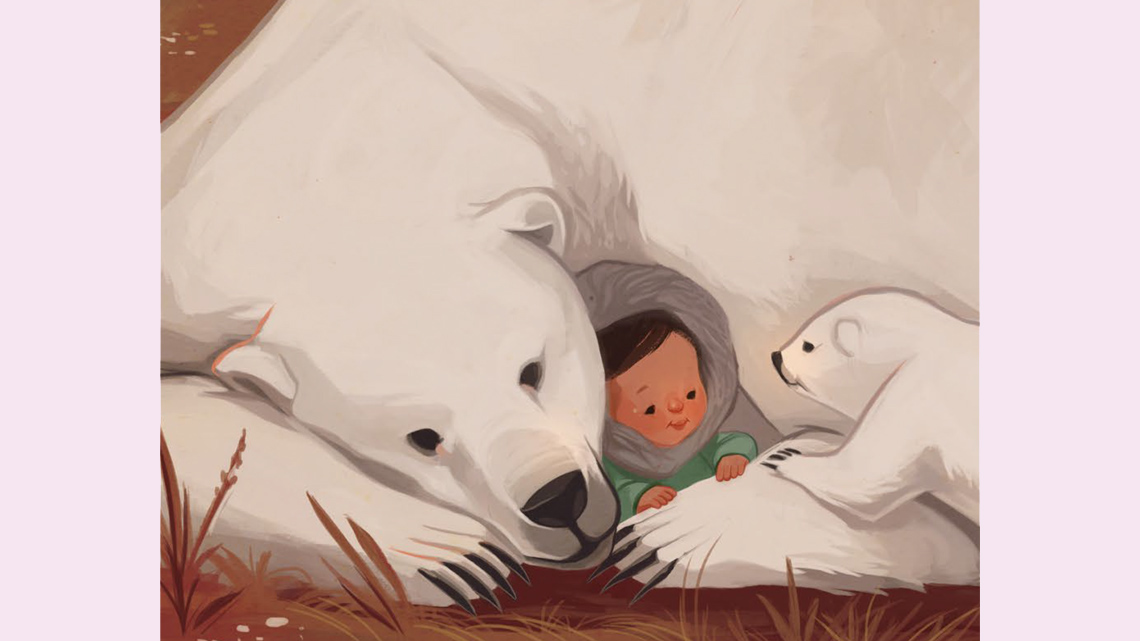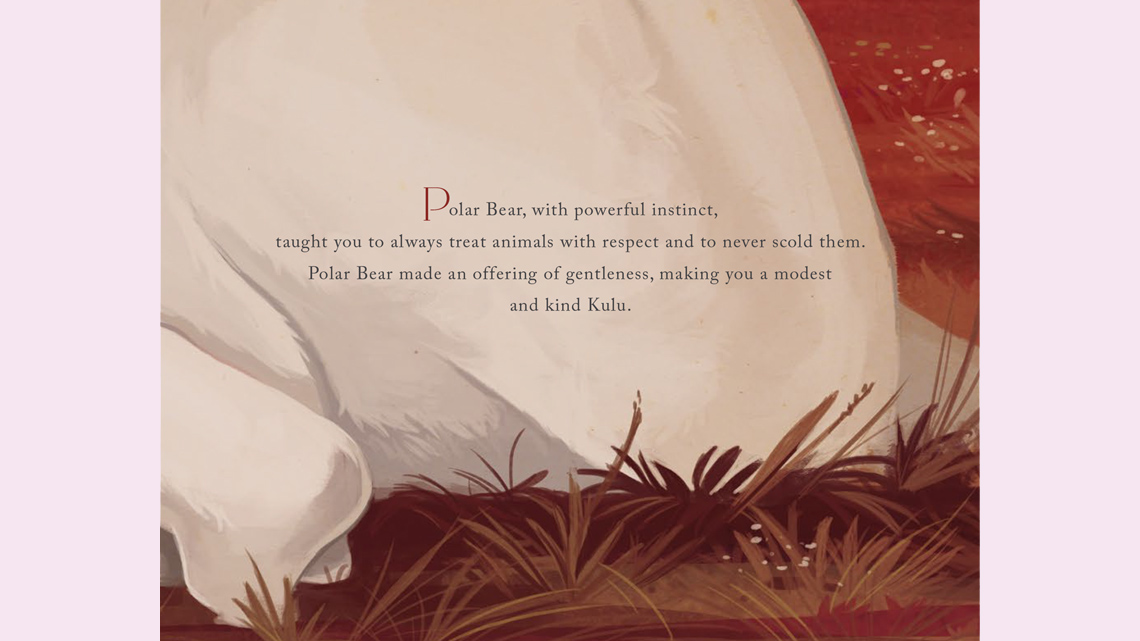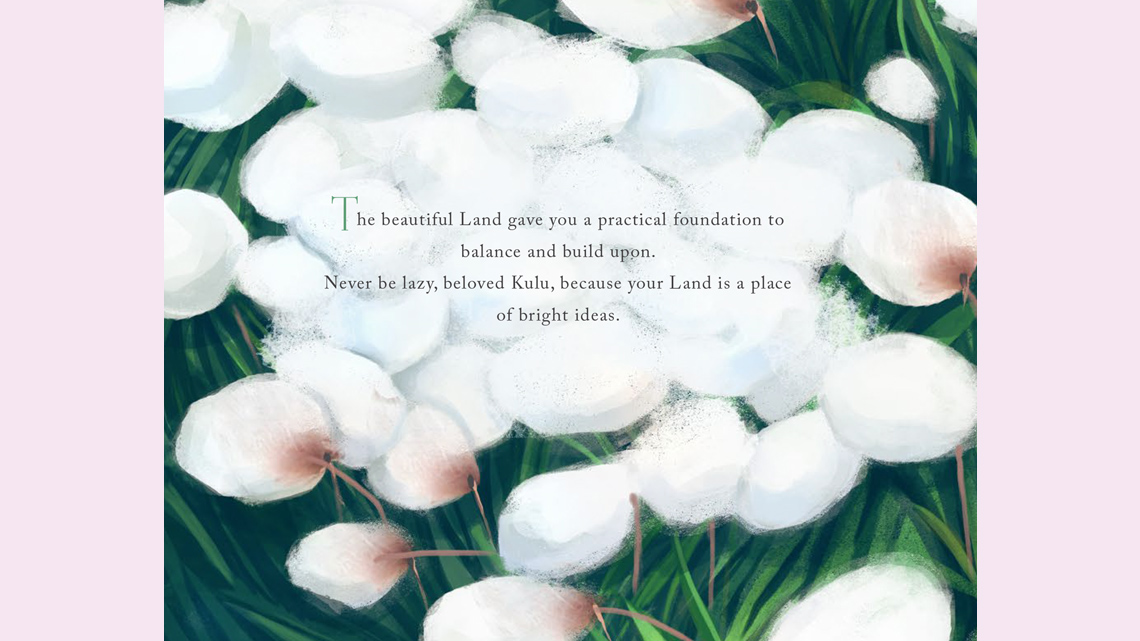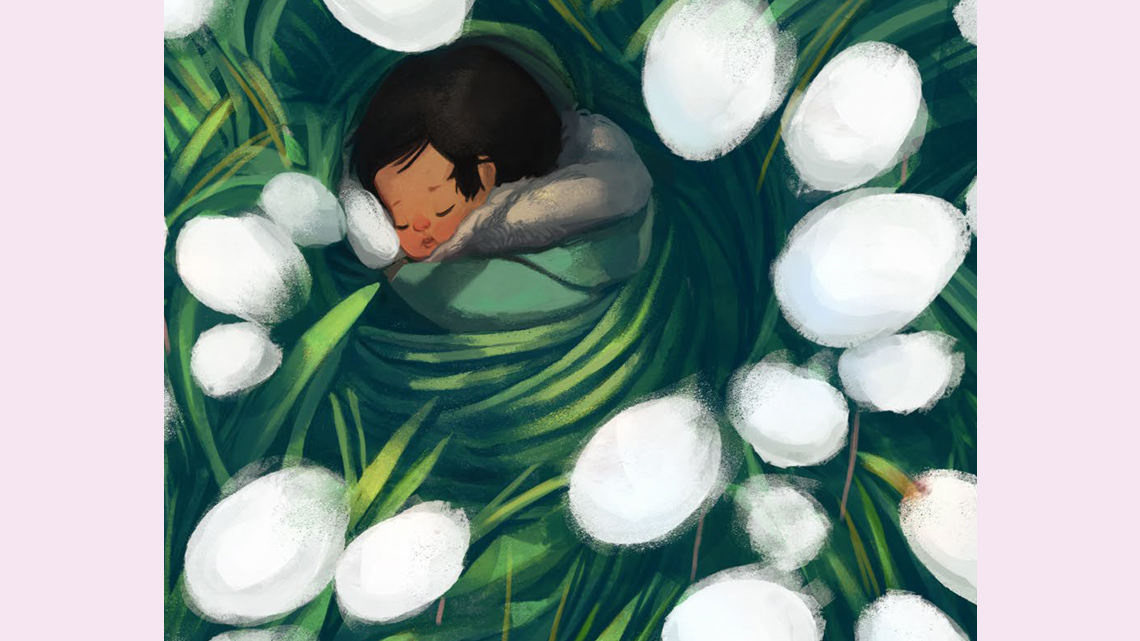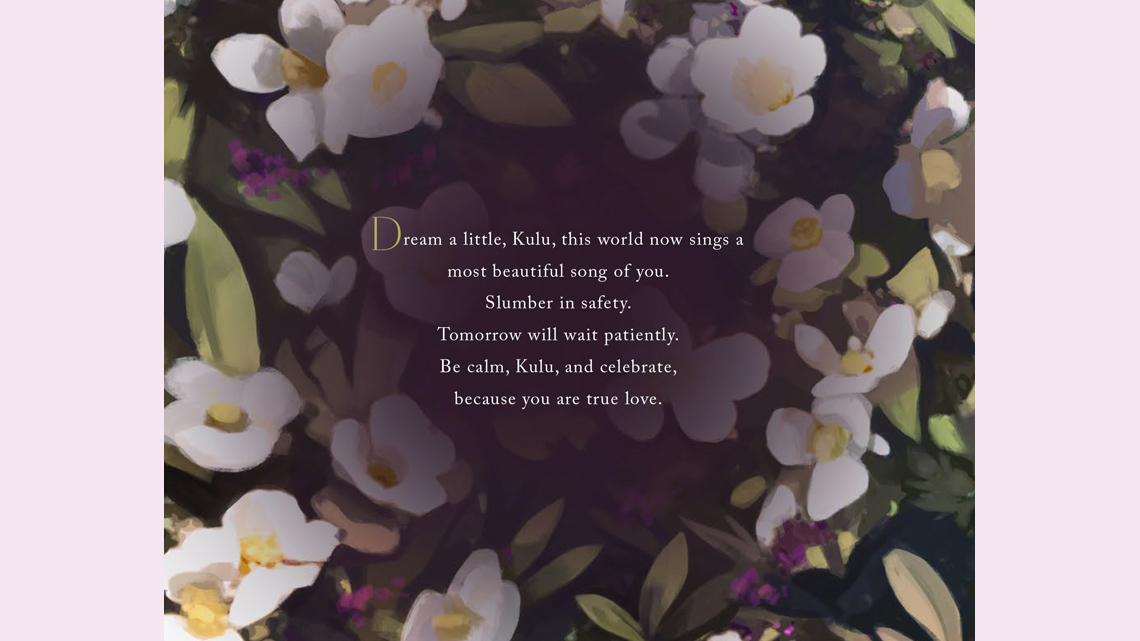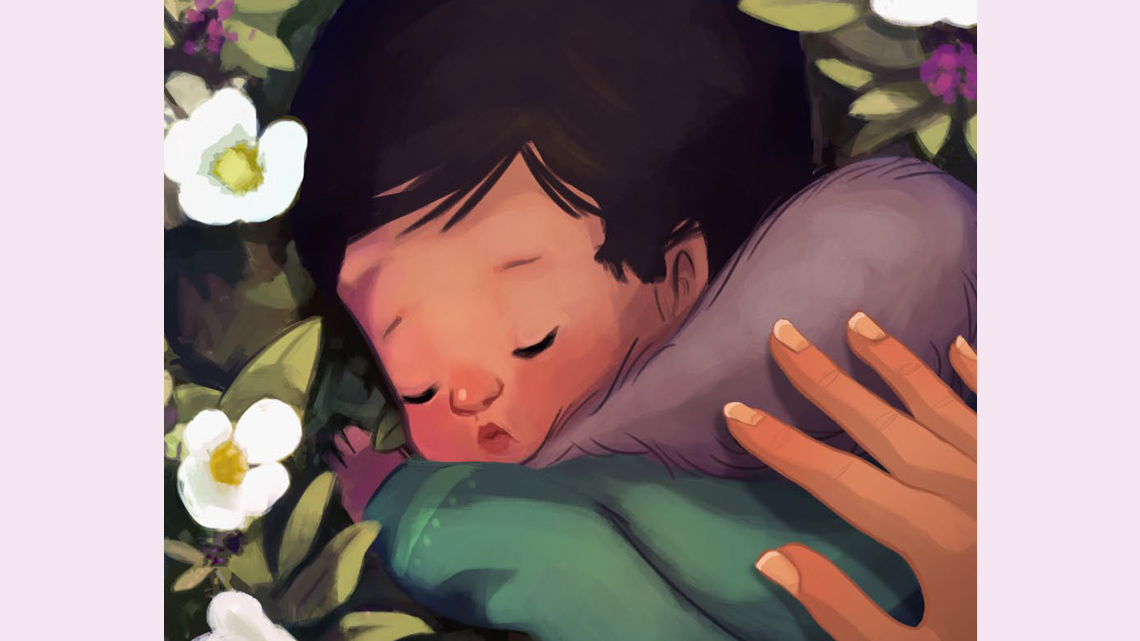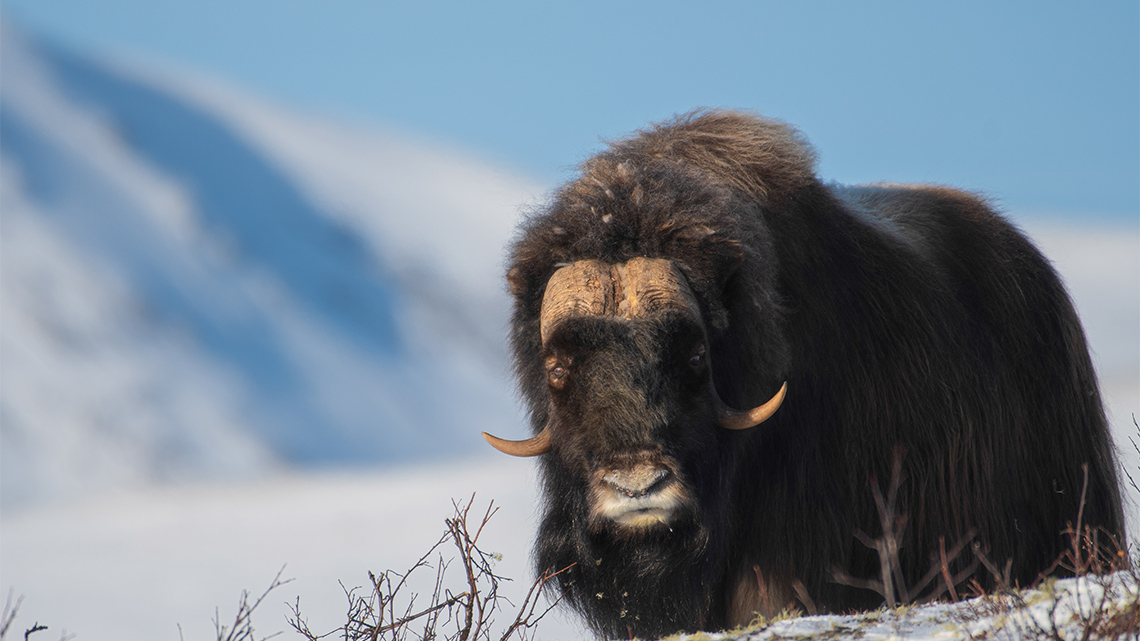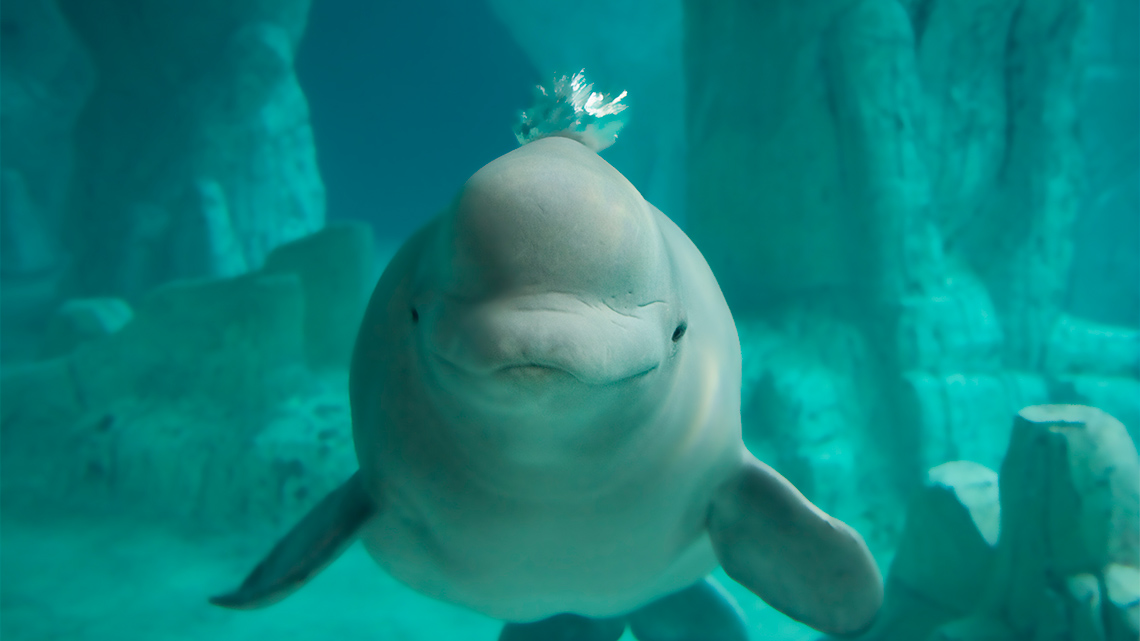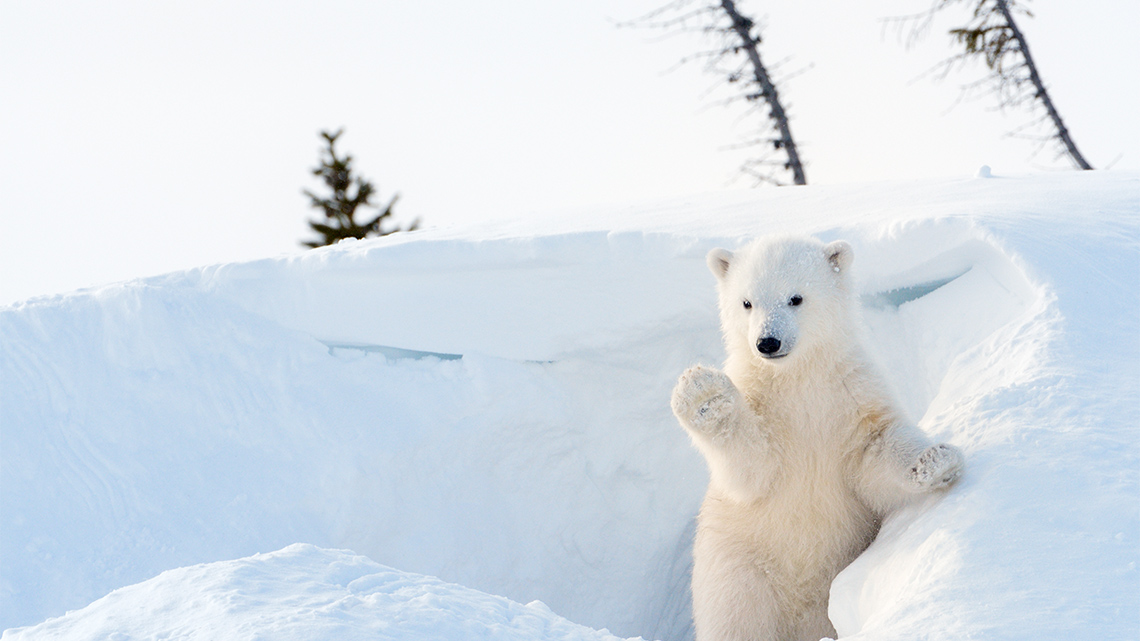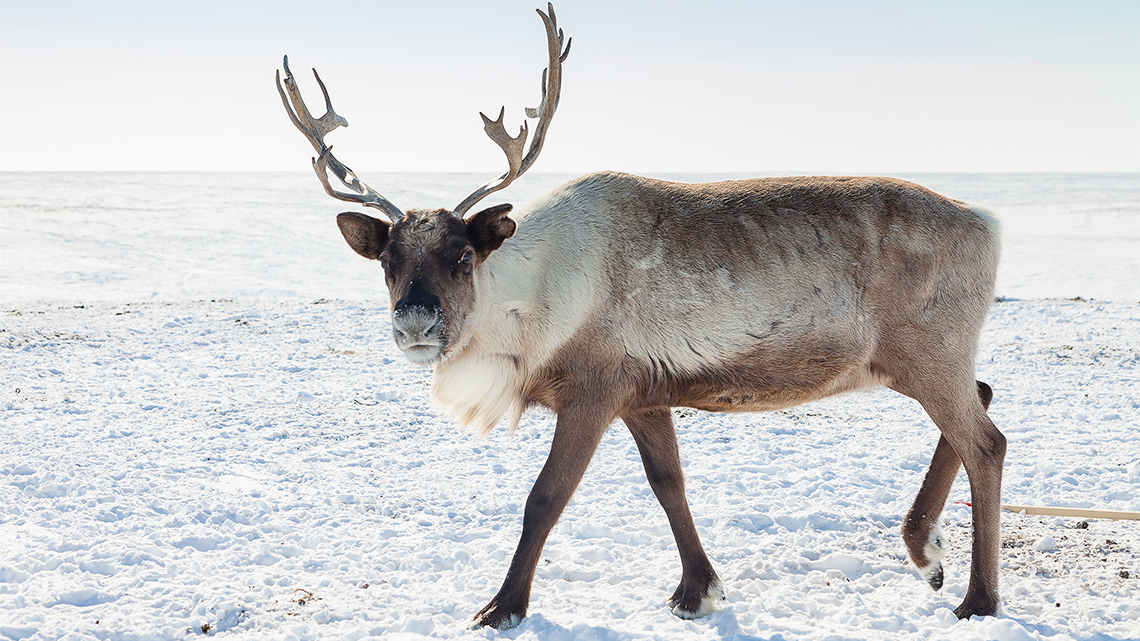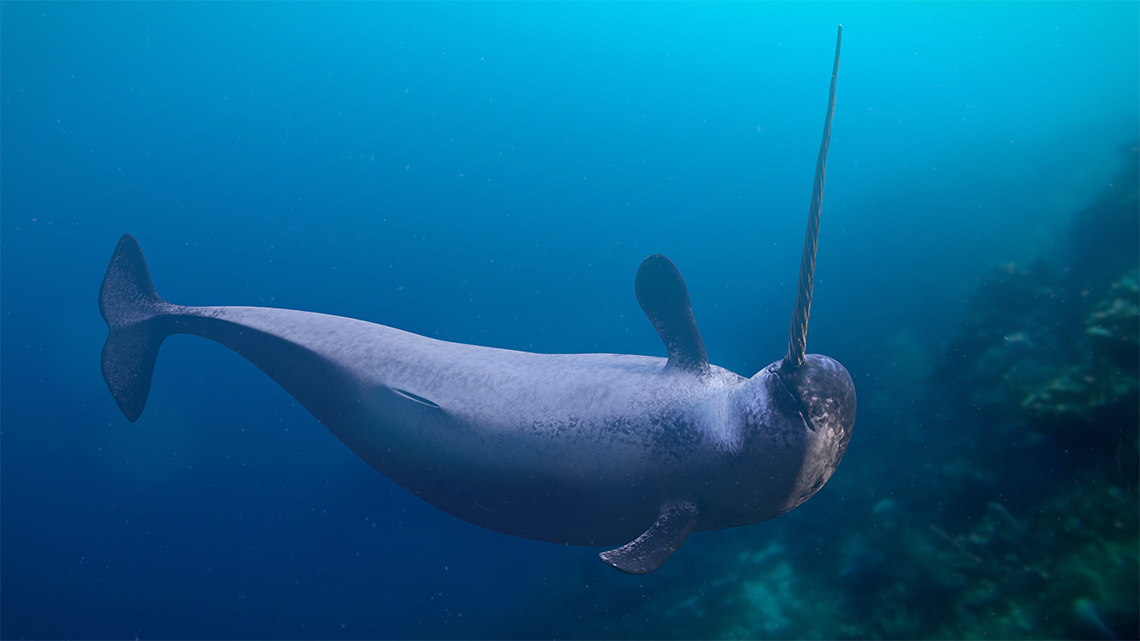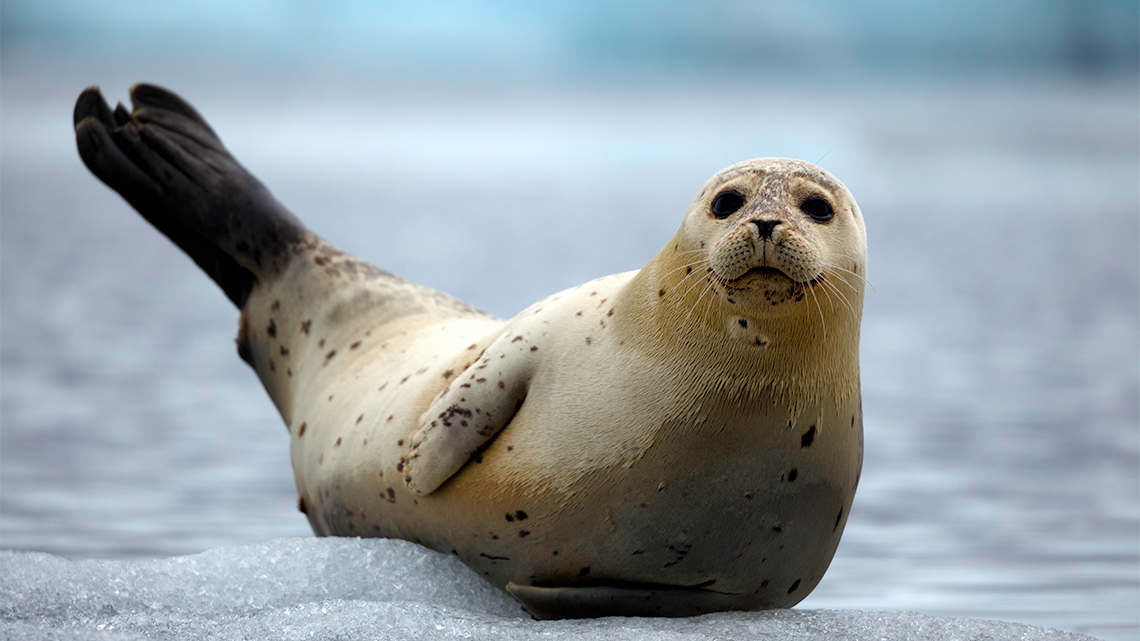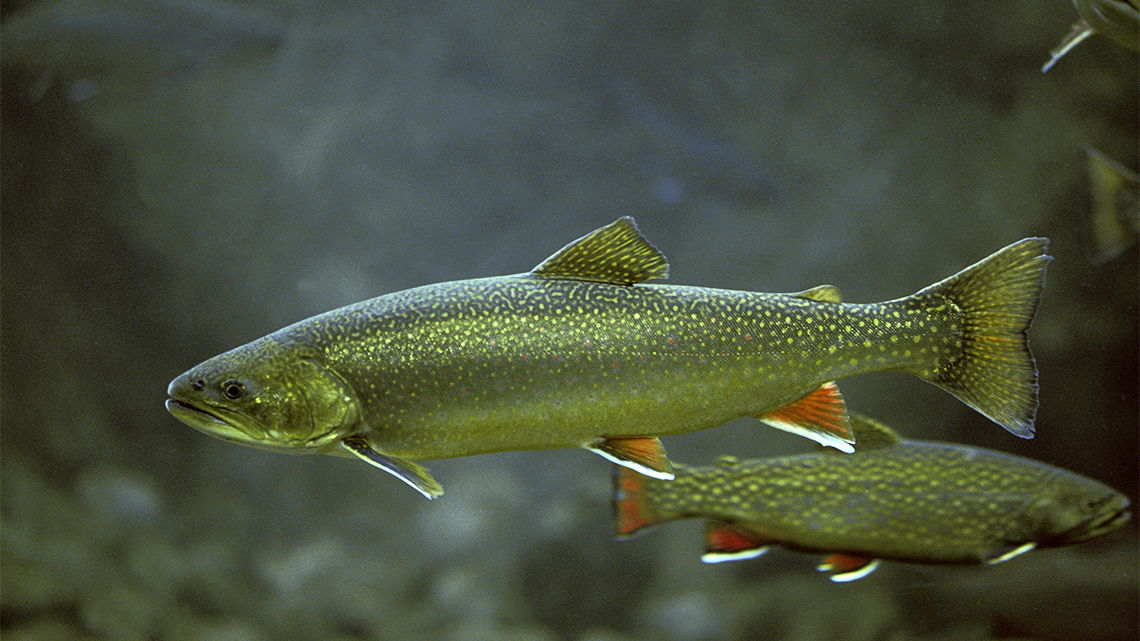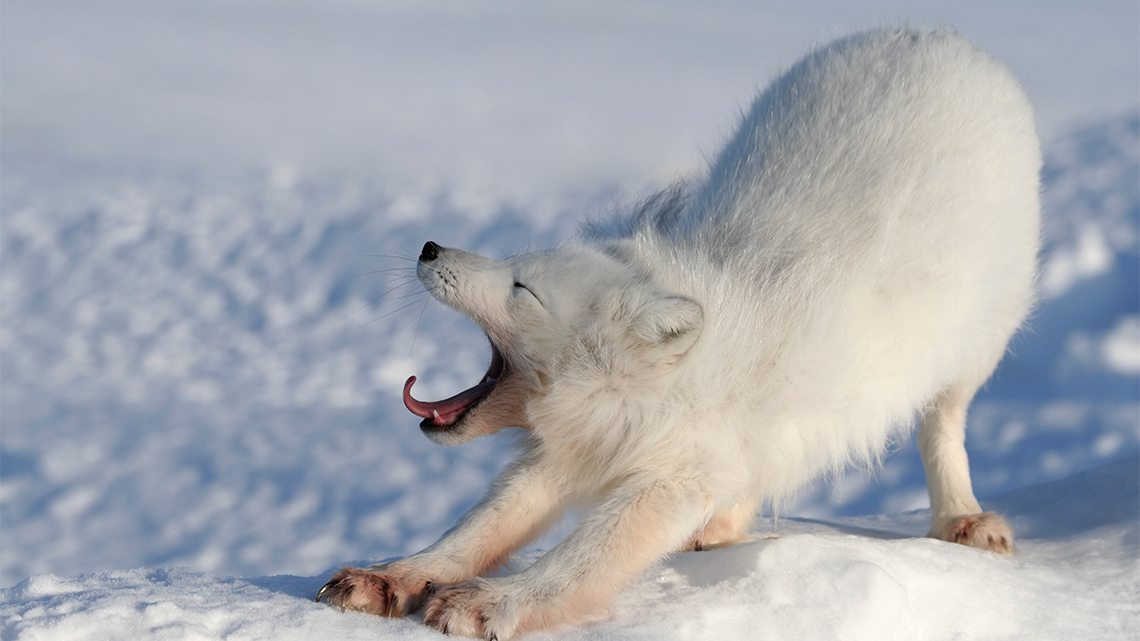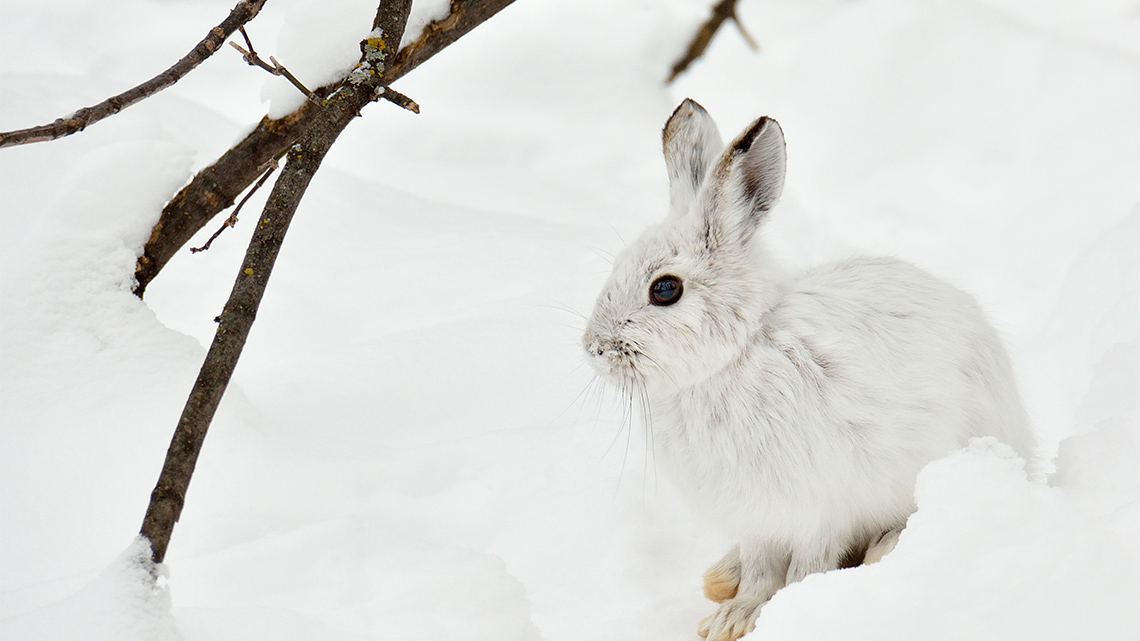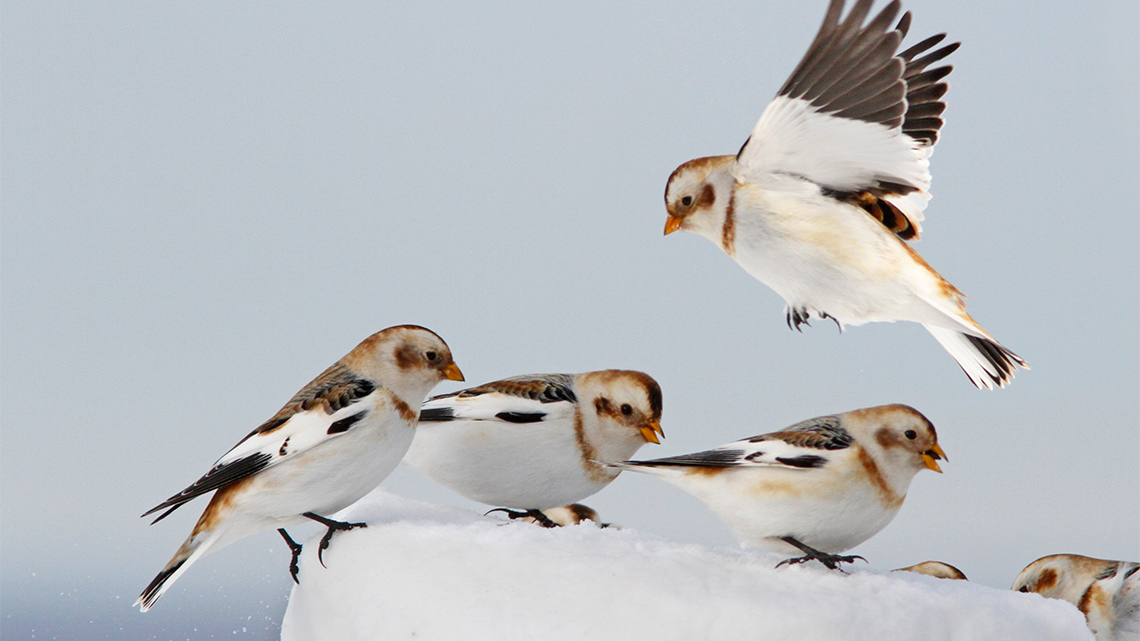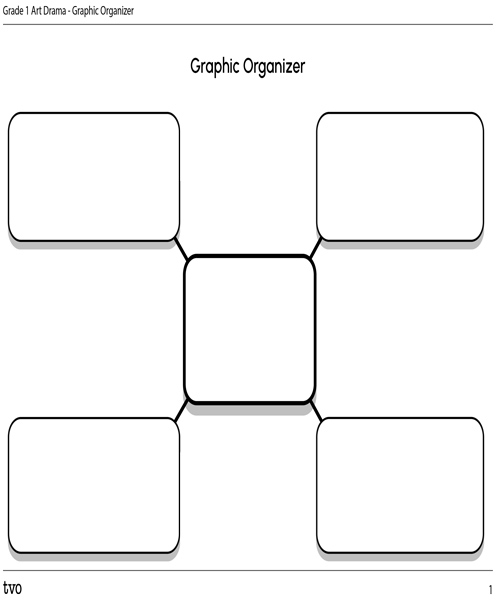Minds On
Let's warm up!
Don't forget to do your safety check!
Warm Up
Warm up
Find a comfortable spot. Let's take a big breath in and then out. Try breathing five times. Ready? Let's go!
- Get in a comfortable position whether it is lying down or sitting.
- Close your eyes.
- As you breathe in, stretch out and make your body as tall and long and big as you can.
- When you breathe out, push out all of the air and make yourself as small as you can.
Access this audio recording entitled “Breathing Warm Up” to experience a guided warm up.
Breathing Warm Up

Let's get started!
Let's return to the story Sweetest Kulu by Inuk author Celina Kalluk. This time, think about the story and how each character plays a part in the story.
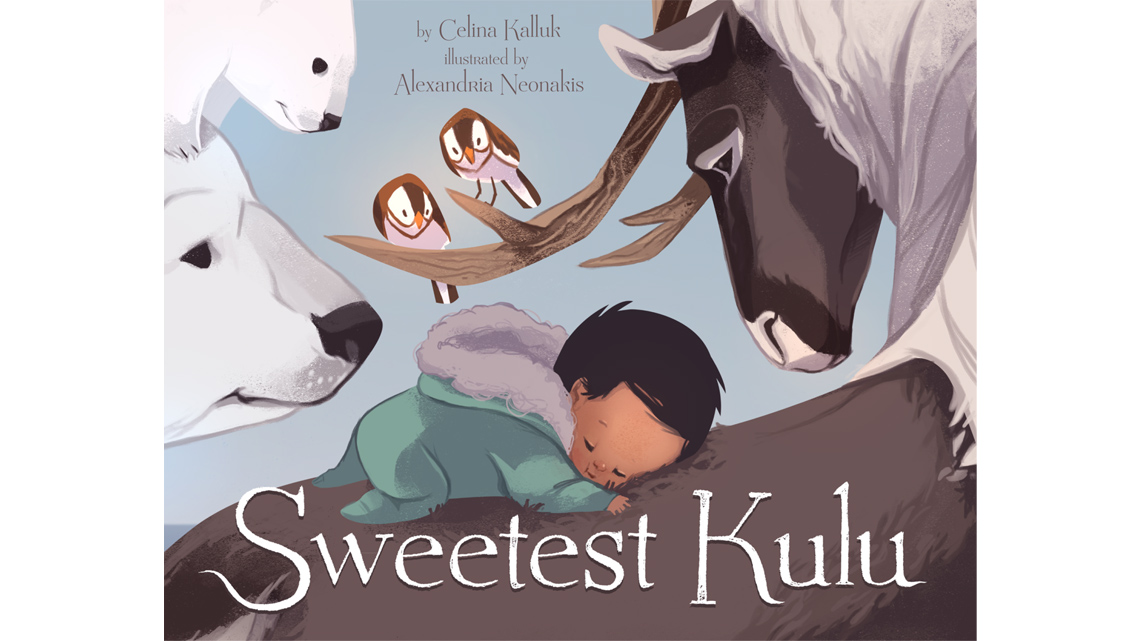
Read the following pages from Sweetest Kulu.
Page One and Two: A sleeping baby being held by an adult against their chest.
Page Three and Four: A deer looks out at a body of water and some mountains while leaves blow in the wind.
Page Five and Six: A baby being visited by a polar bear, a deer, an Arctic hare, a fox, and a beluga whale.
Explore the story in Inuktitut.
Sweetest Kulu in Inuktitut: page 1 to 6
Explore the story in English.
Sweetest Kulu in English: page 1 to 6
Read more pages from Sweetest Kulu.
Page One and Two: A flock of snow buntings bring flowers to a baby lying in a field.
Page Three and Four: An Arctic hare cuddles a baby.
Page Five and Six: A fox visits a yawning baby, who is on the ground. They're surrounded by flowers and plants.
Explore the story in Inuktitut.
Sweetest Kulu in Inuktitut: page 7 to 12
Explore the story in English.
Sweetest Kulu in English: page 7 to 12
Explore the following pages from Sweetest Kulu.
Page One and Two: A baby touches the water with their hand and their reflection can be seen. An Arctic char swims towards the baby's hand.
Page Three and Four: A group of seals swim together in a large body of water.
Page Five and Six: A baby swims underwater and is visited by a narwhal and a beluga whale.
Explore the story in Inuktitut.
Sweetest Kulu in Inuktitut: page 13 to 18
Explore the story in English.
Sweetest Kulu in English: page 13 to 18
Read some more pages from Sweetest Kulu.
Page One and Two: A muskox sits in a field with a baby while the herd forms a circle around them.
Page Three and Four: A caribou looks to the sky while a baby sits on its back.
Page Five and Six: An adult polar bear cuddles a baby while a baby polar visits the baby.
Explore the story in Inuktitut.
Sweetest Kulu in Inuktitut: page 19 to 24
Explore the story in English.
Sweetest Kulu in English: page 19 to 24
Explore the following pages from Sweetest Kulu.
Page One and Two: A swaddled baby sleeps while being surrounded by grass and white flowers.
Page Three and Four: A baby sleeps on a bed of white and purple flowers while being held by an adult.
Explore the story in Inuktitut.
Sweetest Kulu in Inuktitut: page 25 to 28
Explore the story in English.
Sweetest Kulu in English: page 25 to 28
Why is it important to learn about the animals who live on earth?
Which Arctic animal character would you like to explore further?
Action
Get ready, get set…
Creating a drama story
It's time to create our drama story with one of the animal characters.
Let's try it with Arctic Char. Imagine you are Arctic Char and you have just finished visiting Kulu.
Modeled example: Arctic Char
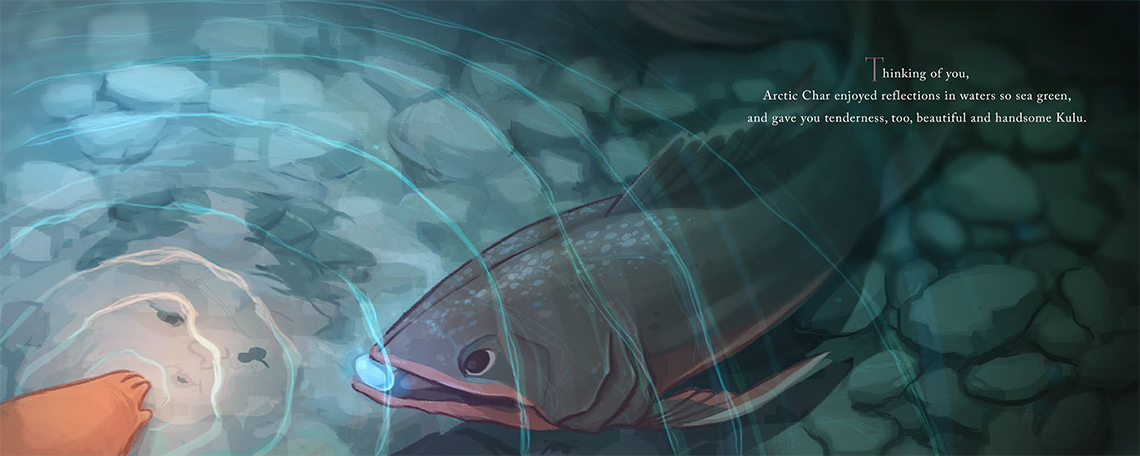
- Where do you go?
- What kind of food do you eat?
- Where do you sleep when you are tired?
Explore how we can use the following After Visiting Kulu graphic organizer to help us brainstorm ideas for our drama story.
After Visiting Kulu

A graphic organizer depicting ideas brainstormed about Arctic Char. There is a center bubble representing the main topic surrounded by three outer bubbles representing ideas brainstormed about the main topic.
Center Bubble: Arctic Char.
Outer Bubble 1: Where do you go? Visit my friends in the water.
Outer Bubble 2: What do you eat? Plankton and little fish.
Outer Bubble 3: Where do you sleep? In a water bed.
Go!
It's your turn!
It's time to plan your drama story!
First, select your favourite animal character from the story Sweetest Kulu.
Who is your animal?
As your animal, think about what you would do after visiting Kulu.
- Where do you go?
- What kind of food do you eat?
- Where do you sleep when you are tired?
Complete the Graphic Organizer in your notebook or using the following fillable and printable document.
If you would like, you can use speech-to-text or audio recording tools to record your thoughts.
As your animal, how do you connect with land and water? Why is it important to you?
Tell a partner, if possible, or create a recording.
Consolidation
Putting it all together

Drama story
Explore the story we created for Arctic Char after visiting Kulu.
|
1 
First, I swam back into the deeper water to tell my friends about meeting Kulu. |
2 
Next, I was hungry. I ate some plankton and small fish. |
3 
Finally, the sun went down, and I was feeling tired. I went to sleep in my water bed. |
We can use words like “first”, “next”, and “finally” to show the audience the order of the drama story.
What if we asked Arctic Char how it feels about the land and water?
Arctic Char might say: “I love the water because it is my home. I want the water to stay clean and clear, so that all of the animals who live here can be happy and healthy.”
Task 1
Create a storyboard for your drama story. Think about what the animal character would do first, next, and finally.
Complete the Drama Story Graphic Organizer in your notebook or using the following fillable and printable document.
|
1 First, |
2 Next, |
3 Finally, |
Draw a picture, use words to create a description, or record an audio clip to share your drama story.
Press the ‘Activity’ button to access the Drama Story Graphic Organizer.
Task 2
If you are acting out your animal, think about the following questions:
- How would they move? Do they make sounds?
- How would they share their ideas with others?
Use your plan to act out your story or tell a partner about it.
Portfolio
Drama portfolio
Consider adding the answers to the following reflection questions to your drama portfolio.
- How did you decide what the Arctic animal would do next?
- Are there any other characters you would introduce in the next part of your drama story?
- How might you add details to improve your drama story next time?
- What did you learn about the importance of land and water for your Arctic animal? Have you thought about the connection between animals and the environment before?
Share your thoughts with a partner, record your ideas using pictures or words, or create an audio clip.
Reflection
How do you feel about what you have learned in this activity? Which of the next four sentences best matches how you are feeling about your learning? Press the button that is beside this sentence.
I feel…
Now, record your ideas about your feelings using a voice recorder, speech-to-text, or writing tool.
